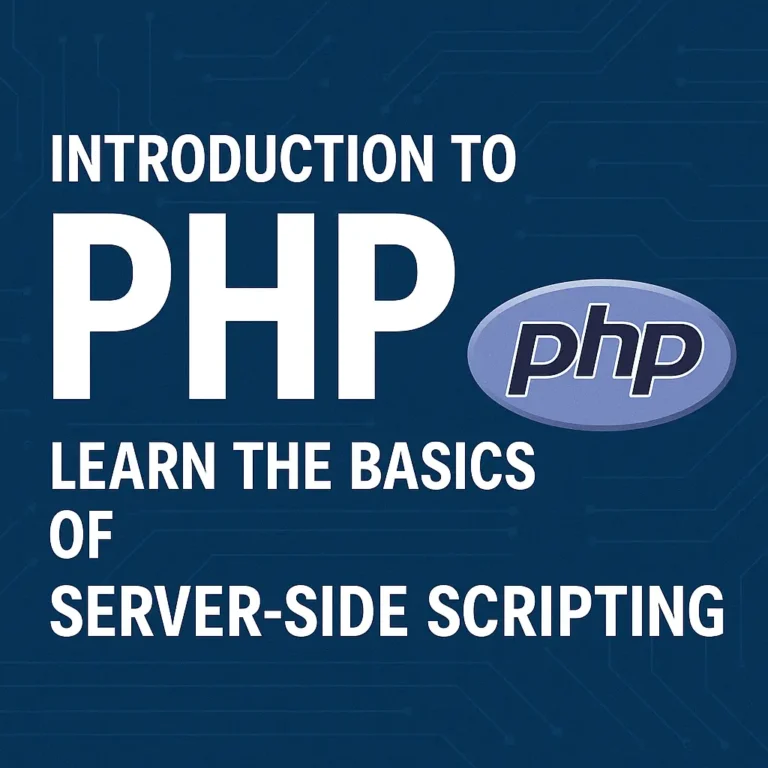In this comprehensive guide, we’ll explore the intricacies of form validation in PHP, covering both client-side and server-side techniques. Through detailed explanations and practical code examples, you’ll learn how to implement robust form validation strategies to enhance the security and usability of your web applications.
Client-side Validation
Client-side validation occurs in the user’s browser using JavaScript before the form is submitted to the server. It provides immediate feedback to users, improving the overall user experience by reducing server requests and page reloads.
Using JavaScript for Validation
JavaScript is commonly used for client-side form validation due to its ability to interact with the HTML DOM and validate form inputs dynamically.
<!DOCTYPE html>
<html lang="en">
<head>
<meta charset="UTF-8">
<meta name="viewport" content="width=device-width, initial-scale=1.0">
<title>Client-side Validation</title>
<script>
function validateForm() {
var username = document.forms["myForm"]["username"].value;
var password = document.forms["myForm"]["password"].value;
if (username == "") {
alert("Username must be filled out");
return false;
}
if (password == "") {
alert("Password must be filled out");
return false;
}
}
</script>
</head>
<body>
<form name="myForm" onsubmit="return validateForm()" method="post" action="process.php">
Username: <input type="text" name="username"><br>
Password: <input type="password" name="password"><br>
<input type="submit" value="Submit">
</form>
<script>var rocket_lcp_data = {"ajax_url":"https:\/\/codersship.com\/wp-admin\/admin-ajax.php","nonce":"03f092c030","url":"https:\/\/codersship.com\/php\/form-validation","is_mobile":false,"elements":"img, video, picture, p, main, div, li, svg","width_threshold":1600,"height_threshold":700,"debug":null}</script><script data-name="wpr-lcp-beacon" src='https://codersship.com/wp-content/plugins/wp-rocket/assets/js/lcp-beacon.min.js' async></script></body>
</html>
In this example, we use JavaScript to validate the username and password fields before the form is submitted. If either field is empty, an alert message is displayed, and the form submission is prevented.
Server-side Validation
Server-side validation occurs on the web server after the form data is submitted, providing an additional layer of security and ensuring data integrity. It is essential for validating data even if client-side validation is implemented to prevent malicious or incorrect data from being processed.
Using PHP for Validation
PHP is commonly used for server-side form validation due to its server-side scripting capabilities and built-in functions for data validation and sanitization.
<?php
// Validate form data
if ($_SERVER["REQUEST_METHOD"] == "POST") {
$username = $_POST["username"];
$password = $_POST["password"];
// Check if username is empty
if (empty($username)) {
$errors[] = "Username is required";
}
// Check if password is empty
if (empty($password)) {
$errors[] = "Password is required";
}
// If there are validation errors, display them
if (!empty($errors)) {
foreach ($errors as $error) {
echo $error . "<br>";
}
} else {
// Process form data
// ...
}
}
?>
In this example, we use PHP to validate the username and password fields after the form is submitted. If either field is empty, an error message is added to the $errors array. If there are validation errors, they are displayed to the user. Otherwise, the form data is processed further.
Best Practices
Implement Both Client-side and Server-side Validation: Use client-side validation for immediate feedback and server-side validation for robust data validation and security.
Sanitize Input Data: Always sanitize and validate user input to prevent security vulnerabilities such as SQL injection and cross-site scripting (XSS) attacks.
Display Clear Error Messages: Provide clear and descriptive error messages to guide users when validation errors occur.
Conclusion
Form validation is a crucial aspect of web development, ensuring that user-submitted data is accurate, secure, and meets specified criteria. In this guide, we explored both client-side and server-side form validation techniques in PHP, leveraging JavaScript for client-side validation and PHP for server-side validation. By mastering form validation strategies and following best practices, you can build web applications that provide a seamless user experience while maintaining data integrity and security.
<?php
// Example PHP code for server-side form validation
if ($_SERVER["REQUEST_METHOD"] == "POST") {
$username = $_POST["username"];
$password = $_POST["password"];
if (empty($username)) {
$errors[] = "Username is required";
}
if (empty($password)) {
$errors[] = "Password is required";
}
if (!empty($errors)) {
foreach ($errors as $error) {
echo $error . "<br>";
}
} else {
// Process form data
// ...
}
}
?>
This PHP script demonstrates server-side form validation by checking if the username and password fields are empty after the form is submitted. If validation errors occur, they are displayed to the user; otherwise, the form data can be further processed as needed.






